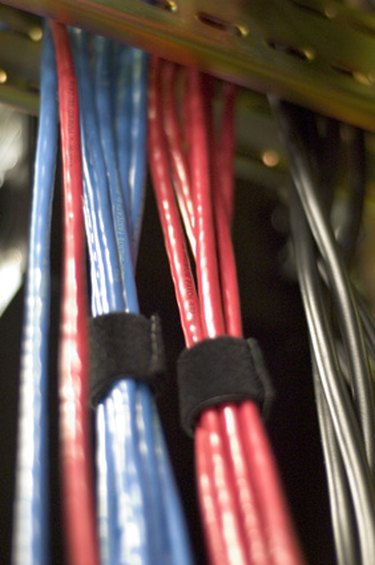
Network infrastructure typically requires a large number of CAT5 or CAT6 cables connected to offices, cubicles and other locations throughout a building. These cables are pulled into a cable closet where they are connected to patch panels that provide RJ45 connectors that are used to connect devices to the cables. Cable closets are then connected to a central cable closet where the core network switches are located. When a cable must be moved or replaced, finding both ends of a single cable when there are hundreds of cables connected into each cable closet can be a daunting task if performed manually. Use a cable toner tool to find both ends of a CAT5 or CAT6 network infrastructure cable quickly when moving or replacing cable.
Step 1
Plug the tone generator portion of a cable toner tool into the patch panel RJ45 port that is connected to a CAT5 or CAT6 cable that you wish to trace.
Video of the Day
Step 2
Carry the tone tracer portion of the cable toner tool to the cable closet or location where the opposite end of the cable is located.
Step 3
Place the tone tracer tool over each port on the patch panels where the cable being traced is connected. When the tone tracer tool makes a tone or beep sound, the port over which the tracer tool is located when making the sound is the port to which the other end of the cable being traced is connected.
Video of the Day